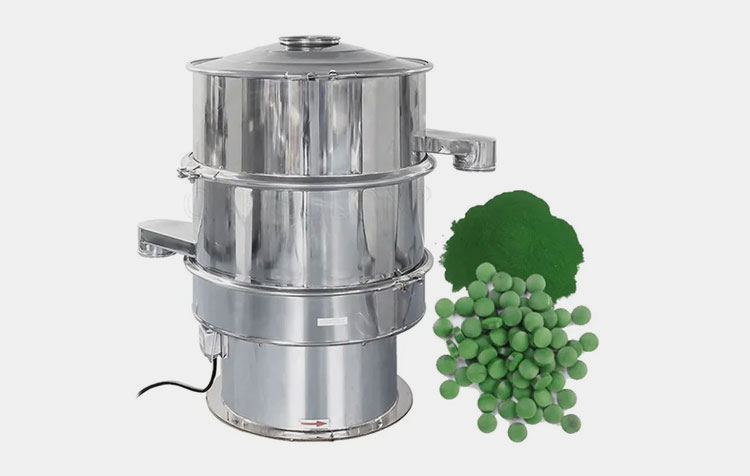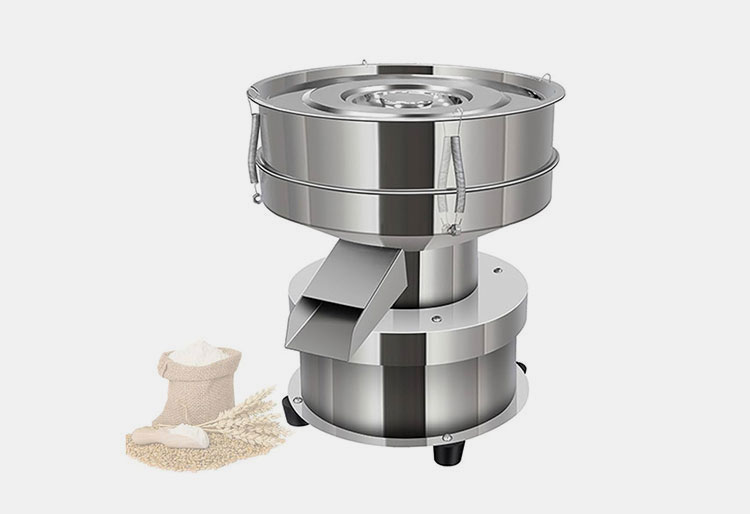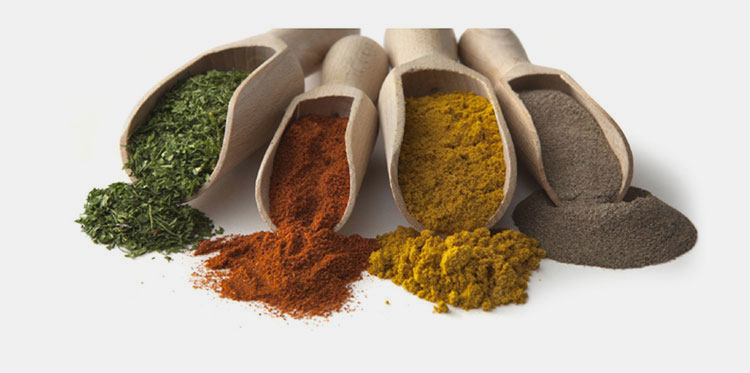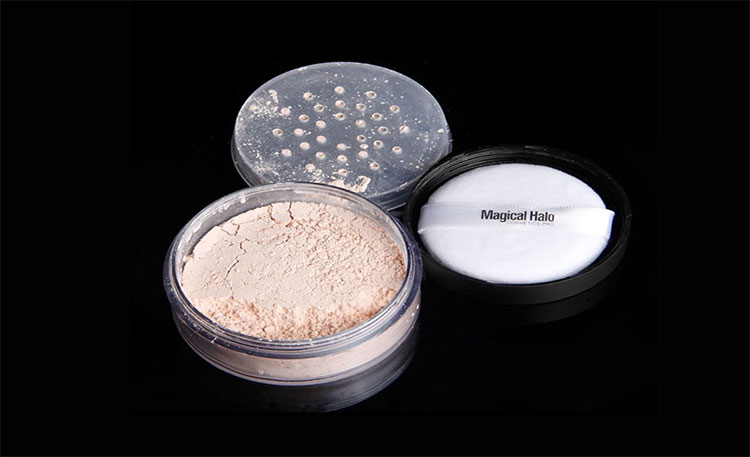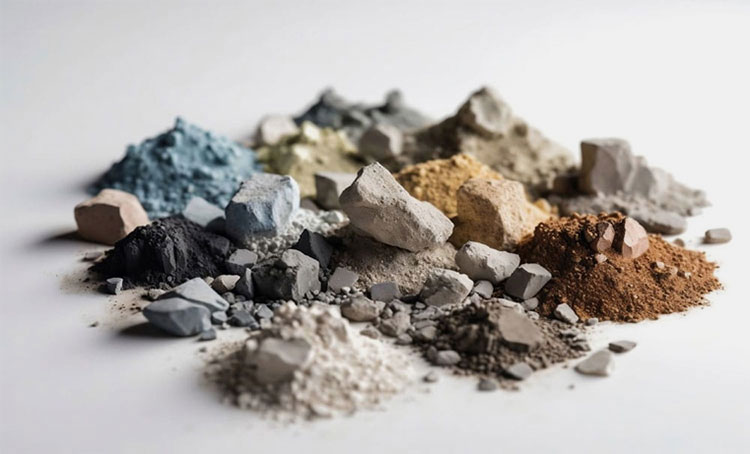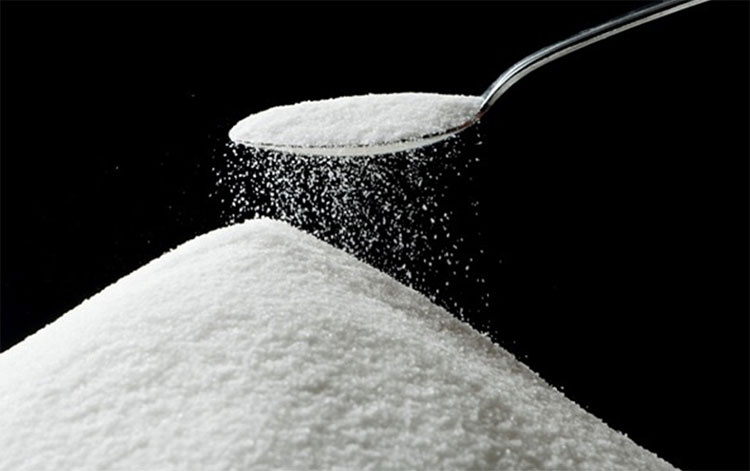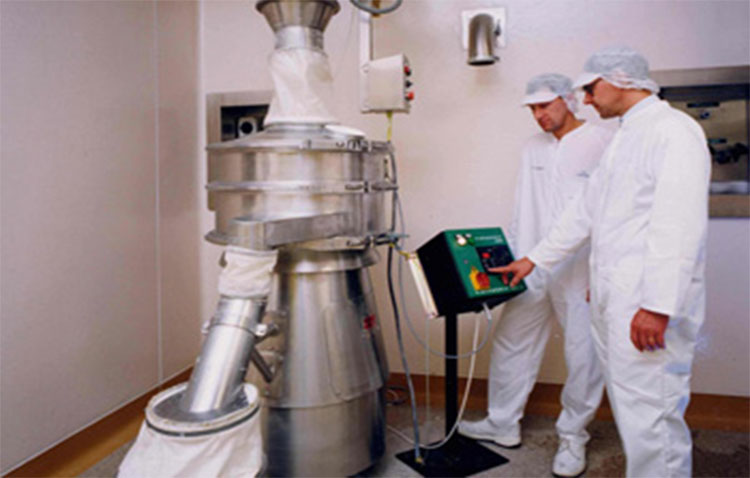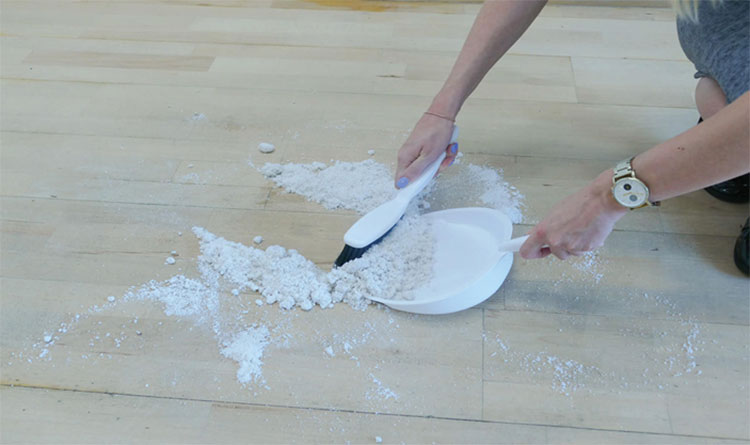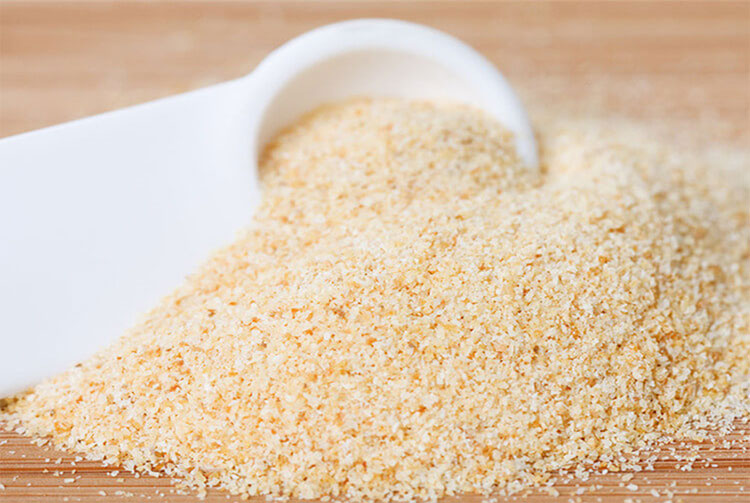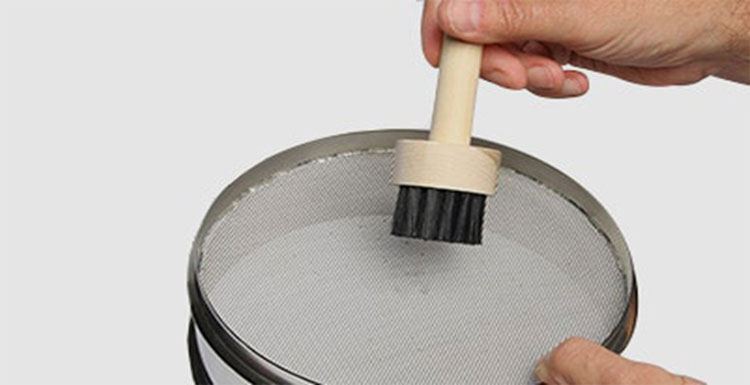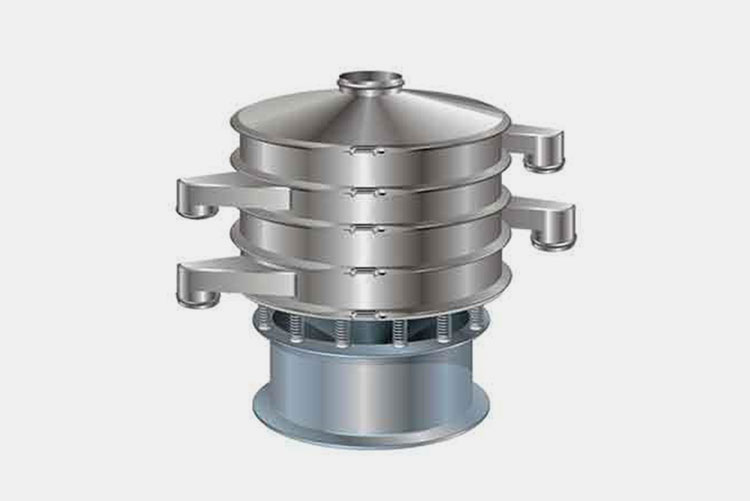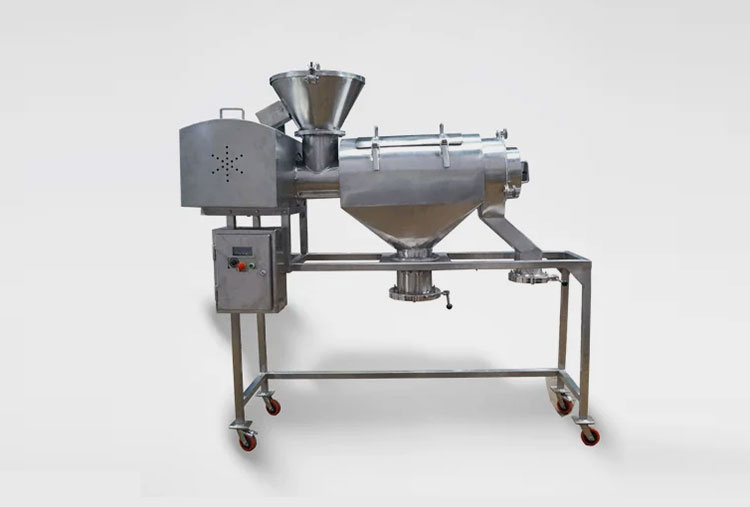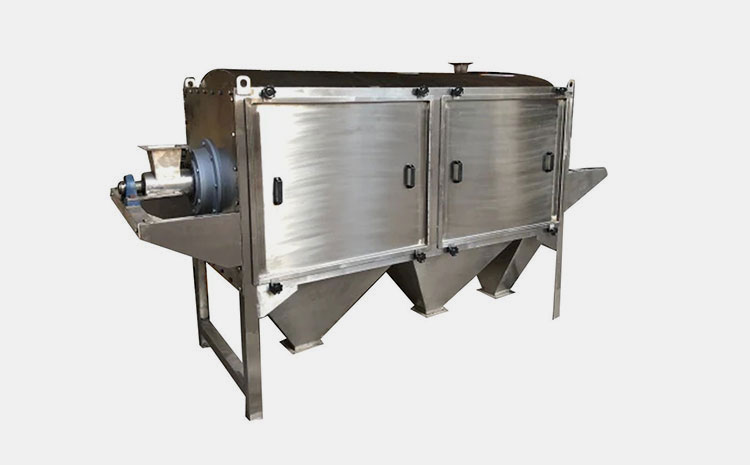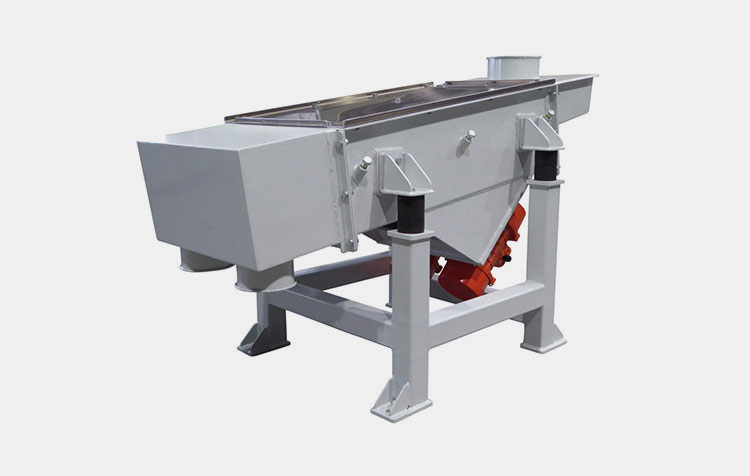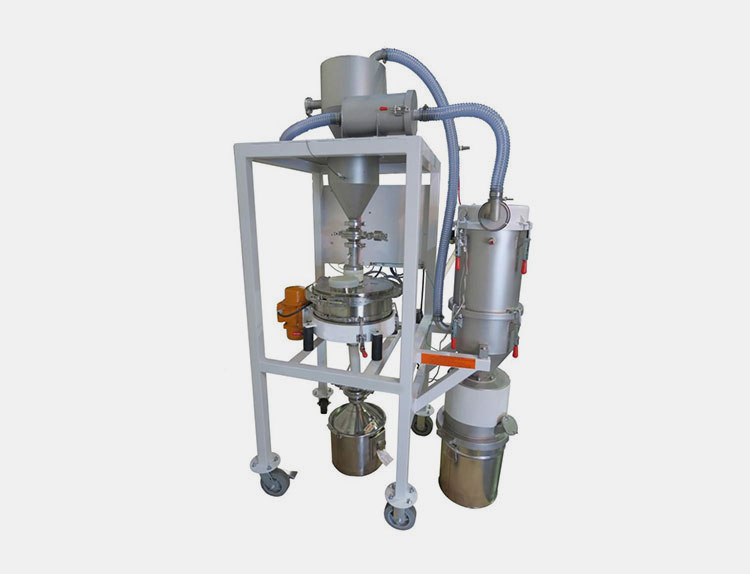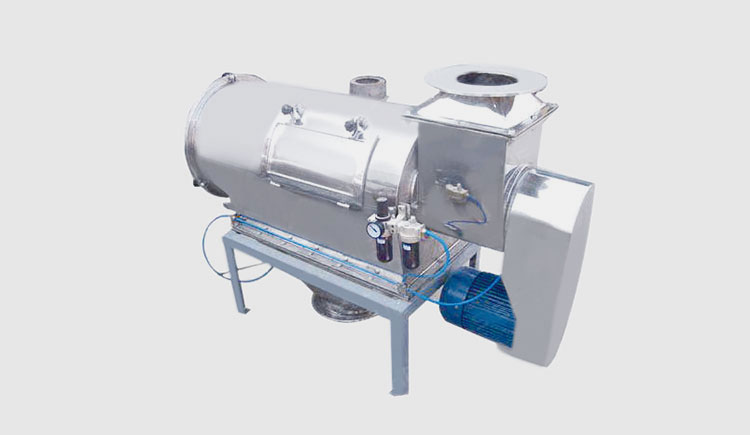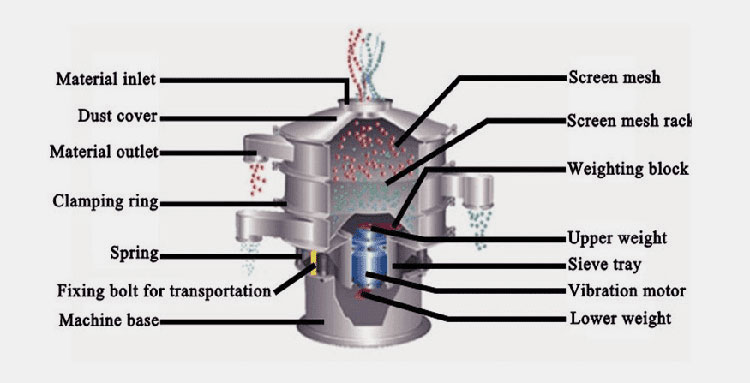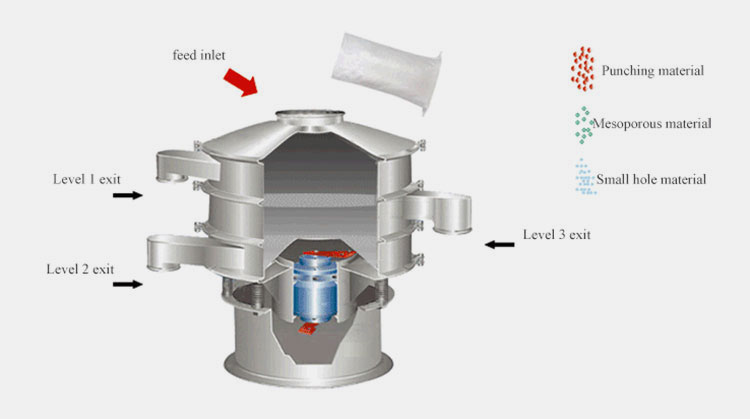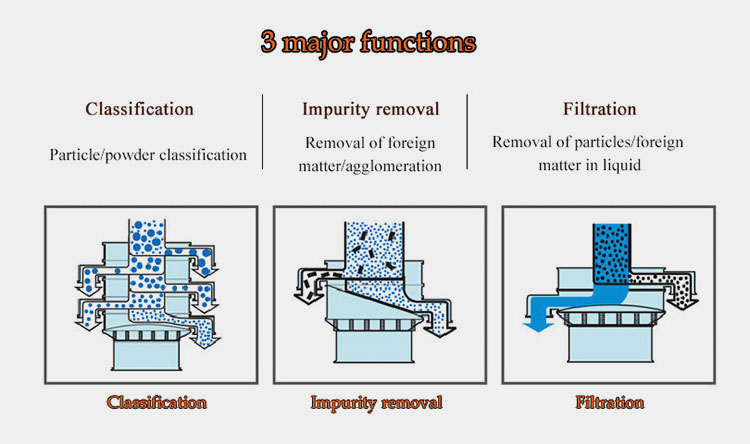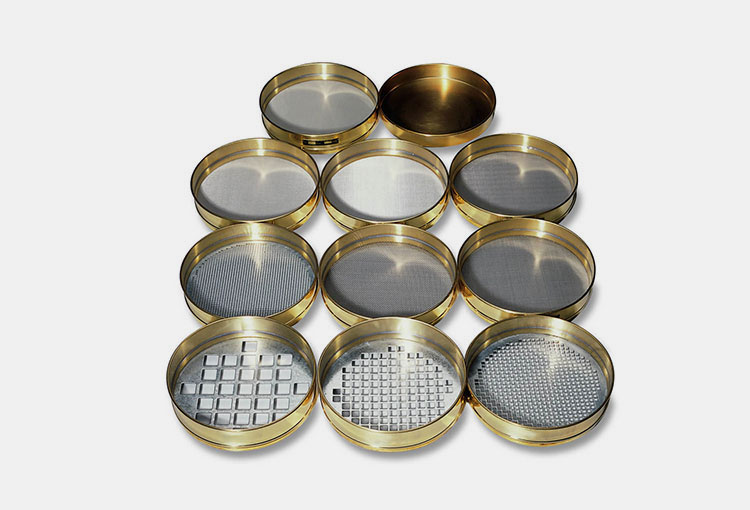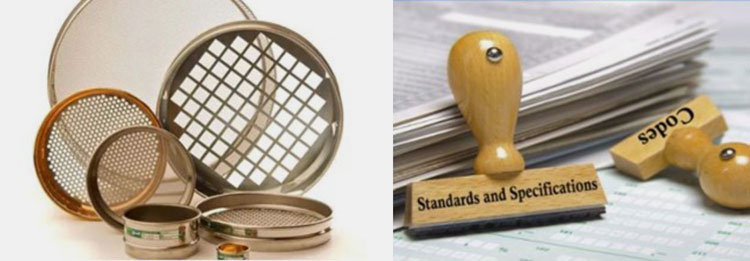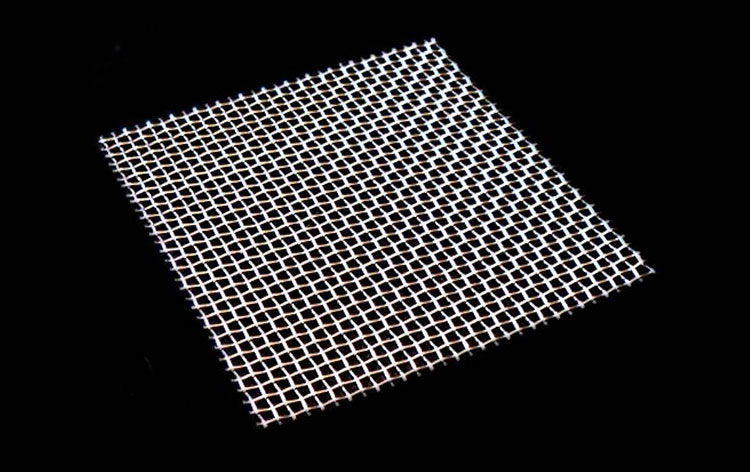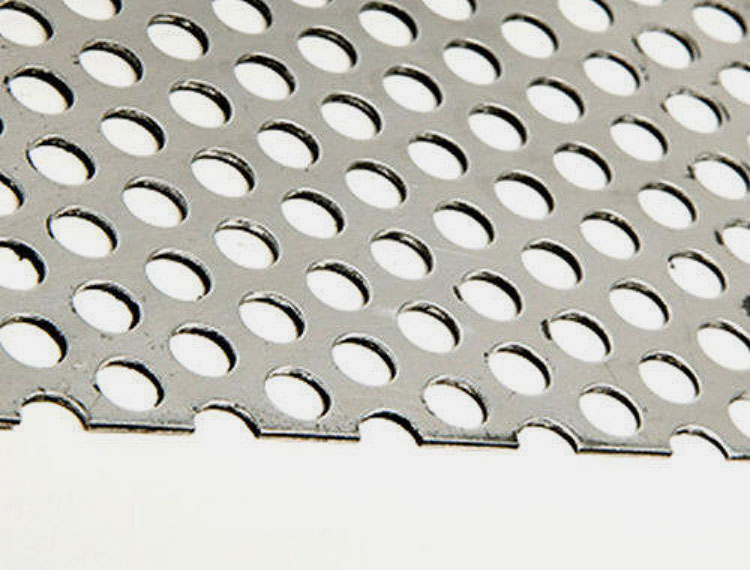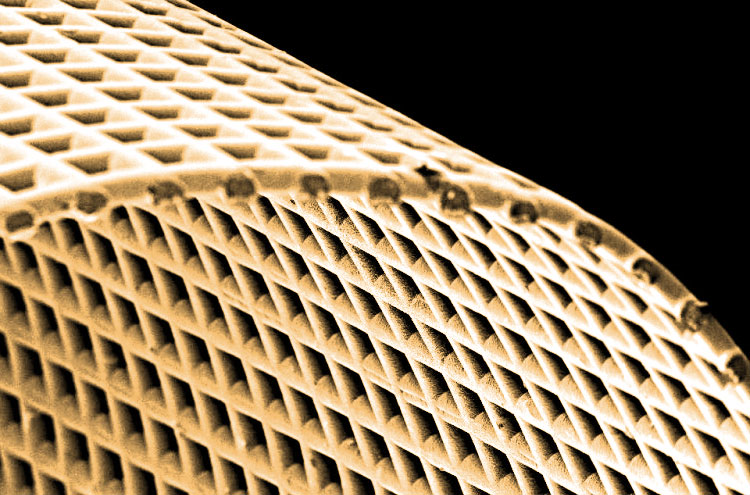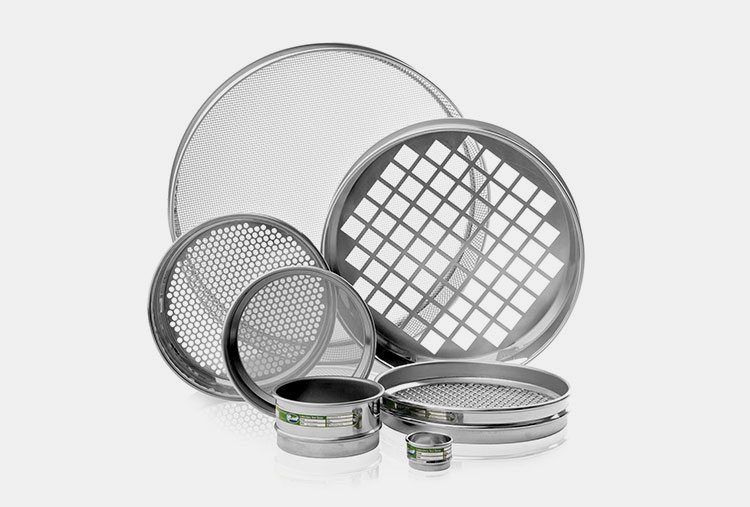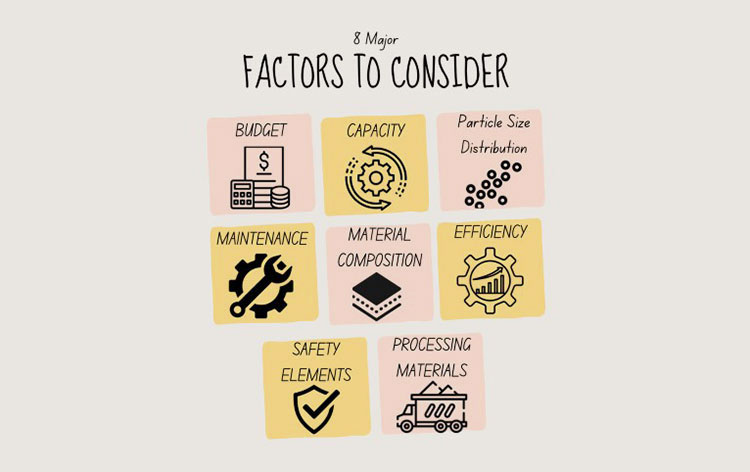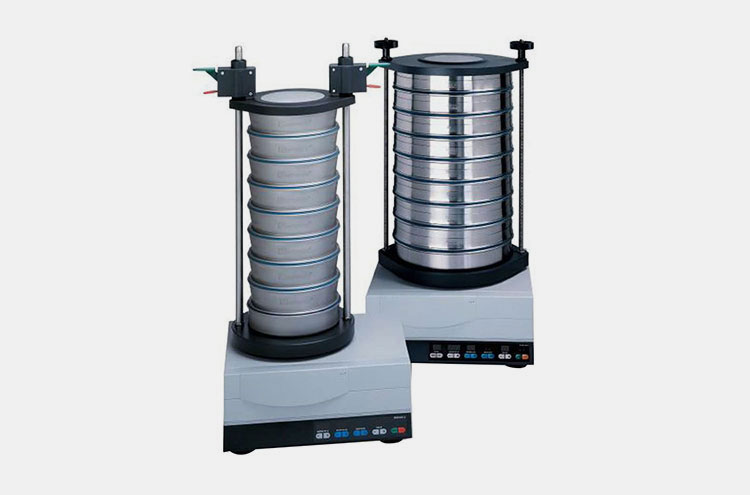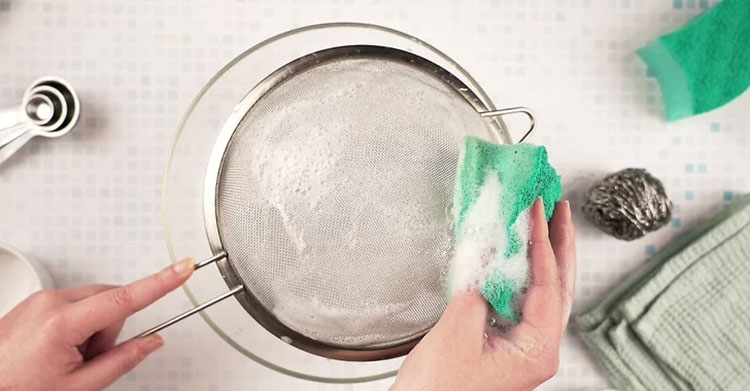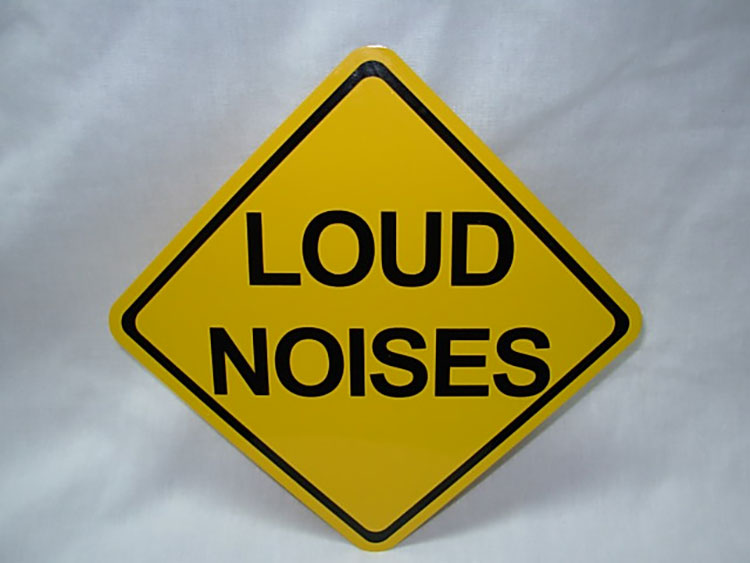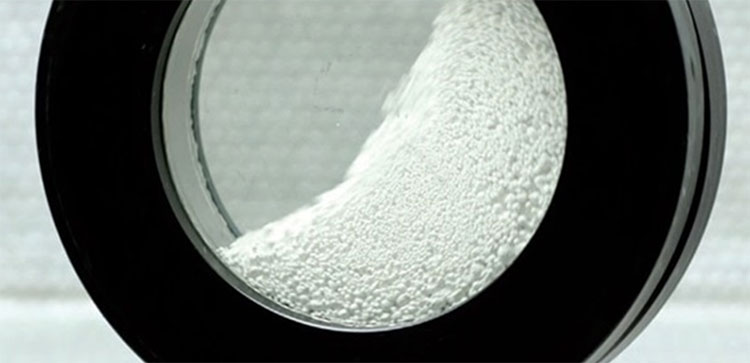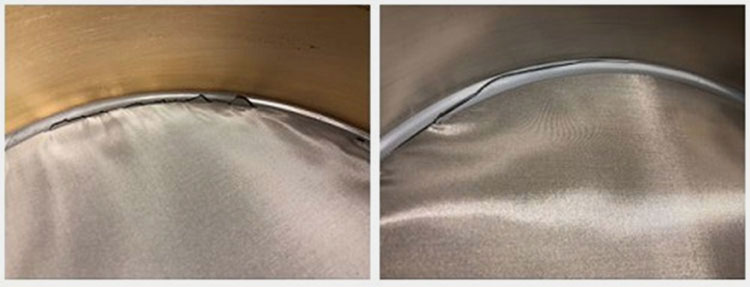Powder Sieving Machine:The Complete Buying Guide In 2025
Are you facing difficulty in getting uniform particle sizes of granules or powders? Are you frustrated by the manual sifting of powders and the non-uniformity of your final manufactured product? Do you feel intimidated by the plethora of brands available in the market?
Don’t worry; we are here to guide you through buying a powder sieving machine. Whether you are in pharmaceuticals, food, chemicals, or cosmetics, there is always a need for a reliable, efficient powder-sieving machine. But the question remains; what will guide you while shopping for such equipment?
The powder-sieving process continues to evolve thanks to technological advancements. A range of equipment is now available to facilitate the powder screening process.
In this detailed blog, we will have a comprehensive discussion on the powder sieving machine. Join us to learn everything about this machine and how opting for it can help you efficiently grow your business.
1.What is a powder sieving machine?
Powder Sieving Machine
A powder sieving machine is a crucial element of any industry designed to segregate particles of distinct sizes efficiently. It can also be named a vibrating-sieving machine or a powder-sifter. The ground materials are progressed through a series of sifts or screens having different-sized apertures.
It is employed to enhance the flow properties of powders, for the material’s gradation, and the filtration of powdered ingredients. The device can also be utilized to filter impurities like dust or other unwanted contaminants from the feed.
It is an indispensable element of many industries inclusive of pharmaceuticals, food, chemicals, and cosmetics. The device facilitates the straining operation by providing a vibrating force, making the process quick and easy.
2.Which materials can be processed using a powder sieving machine?
There is a diverse range of materials across industries that can be processed using a powder sieving machine. Some of the common materials are;
Powders
Powdered Matter – Picture Courtesy: Syntegon
Almost the majority of the products are made from crushed materials known as powders. Raw powders are utilized in every industry for the manufacturing of the final product, e.g. the pharmaceutical industry utilizes powders of active ingredients as well as additives to fabricate different dosage forms.
Similarly, other industries like the food and chemical industry also fabricate products from different powdered contents.
The uniformity in the grain size of the powdered matter is crucial for the consistency in the final product, and to achieve that uniformity with accurate results, a powder sieving machine can be utilized, which can process all kinds of free-flowing and non-free-flowing powders, e.g. Flour, spices, ores, ceramic powders, cosmetic powders, dyes, barn, and pharmaceutical powders.
Granules
Granular Material
Granules are another form of minute content that are utilized to formulate different products, particularly in the drug industry to formulate tablets and capsules, granular materials are utilized.
A powder sieving machine can also be employed to achieve consistency in the particle size of granules of all sizes for better outcomes in the final product as well as for use as a granular form. Examples include; pharmaceutical granules, grains, fertilizer chemicals, and minerals.
Pellets
Pellets
Pellets are another form of particulate matter which can be of multiple shapes and can be used for various purposes. Pellets can also be screened using a powder sieving machine.
3.What is the role of a powder sieving machine in various industries?
A powder sieving machine is widely employed across various industries for various applications. Some of the industries in which a powder sieving machine plays a range of important roles are;
Pharmaceuticals
Pharmaceutical Powders & Products – Picture Courtesy: ChemExpress
In the drug industry, particle size variation is the most troublesome situation and the industry manager has to keep strict control over particle size uniformity for consistent results.
In the pharmaceutical industry, a powder sieving machine can have some key roles to perform. It is utilized to ensure uniformity in the particle size distribution of the powders and granules, leading to better quality products with accurate dosing consistency.
It also aids in maintaining the regulatory standards of the products across batches and minimizing the chances of variations.
Food and Beverage
Food Powders – Picture Courtesy: Stable Micro Systems
In the food industry, the machine is employed to remove impurities from different powdered substances, such as flour, bran, spices, and more. It also helps classify and grade powders, like sugar, spices, and cocoa powder.
Chemicals
Dyes & Pigments – Picture Courtesy: Koel Colours
The machine in the chemical industry helps in the screening and grading of powdered dyes and pigments to ensure consistency in colors. It also aids in the processing of polymers for better polymeric material consistency.
Cosmetics
Cosmetic Powders
The refining of cosmetics powders like talc can also be done using a powder sieving machine, ensuring consistency and smooth texture. Moreover, it is used for the classification and sieving of powdered additives.
Metallurgy
Crushed Minerals
Yes, you read that right. A powder sieving machine can also be employed in the mining and metallurgy sector as it aids in the screening of ores and aggregates to separate and classify the minerals.
4.What are the benefits of installing a powder sieving machine?
A powder sieving machine provides several advantages for various industries. Some of these are;
Improved Quality of Product
Improved Product Quality – Picture Courtesy: dia Tribe
A powder sieving machine ensures a consistent distribution of particle size and filtration of raw materials removing any dust impurities, resulting in upgraded quality of products and improved uniformity.
Increased Efficiency
Efficient Operation – Picture Courtesy: AZoM
A powder sieving machine automates the sieving process, reducing the essential proportion of manual labor. These machines can tackle a bulk of the materials efficiently and quickly, maximizing the output.
Increased Productivity
Increased Productivity – Picture Courtesy: KUOW
These machines can operate at a higher rate efficiently without any significant interruption, leading to higher productivity in product formulations.
Cost-effectiveness
Reduced Labor/Cost-effective – Picture Courtesy: European Pharmaceutical Review
By providing automatic processing, a powder sieving machine largely eliminates the labor need resulting in the lower cost of operation.
Resources Preservation
Reduced Chances of Spills/Waste
Manual sieving can result in a significant loss of resources due to human errors. A powder sieving machine helps in lowering the waste of resources.
Hygienic Operation
Hygienic Processing – Picture Courtesy: Food Processing Machines
A powder sieving machine is designed with multiple safety features, protecting the materials from environmental exposure and cross-contamination, ensuring the entire operation is performed in a hygienic space.
Customization
Customized Sieves
A powder sieving machine offers flexibility and adaptability in its components. This feature allows you to satisfy the various requirements of multiple products.
Maintenance Ease
Maintenance at Ease
The cleaning and maintenance of the machine is quite easy. The screens are removable and can be cleaned or replaced swiftly.
5.What are the different types of powder sieving machines?
There are different variants of the powder sieving machine, each having unique features and advantages. Here we are discussing one by one;
Vibratory-Powder Sieving Machine
Vibrating-Powder Sieving Machine
These machines utilize vibration force to aid powder flow through a screen mesh. The vibrations are produced by an installed motor to ease the particle separation effectively. Various industries have employed vibrating sieve machines due to their incredible precision and productivity.
Rotary Powder Sieving Machine
Rotary Powder Sieving Machine
A circular screen that is spinning is being utilized in this sort of machine, for the segregation of particles according to size. The feed after getting entered into the device moves around the revolving screen, which allows the different-sized grains to be separated accordingly. Because of the ability to effectively handle numerous materials, these devices are extremely beneficial for bigger projects.
Centrifugal Powder Sieving Machine
Centrifugal Powder Sieving Machine
This class of machines exploits the centrifugal force for the straining of particles. The feed is introduced to a barrel or basket which is rotating. Due to the spinning motion of the basket, the different-sized particles get propelled by the centrifugal force toward the outer fringes which allows the smaller particles to drift through the screen.
This is a special kind of device that is beneficial for processing exquisite materials, as it allows smooth screening.
Tumbler Powder Sieving Machine
Tumbler Powder Sieving Machine
This variant of the powder sieving machine contains a circular drum, which rotates and results in the tumbling of the feed inside. This tumbling motion segregates the particles according to size and shape. These machines can also tackle delicate materials because of their smooth working process.
Ultrasonic Powder Sieving Machine
Ultrasonic Powder Sieving Machine
These devices utilize ultrasonic transducers to generate high-frequency vibrations to ease the sieving process. These vibrations allow the separation of fine particles by breaking the surface tension between the strain and the feed grains.
The ultrasonic machines are beneficial for tasks needing higher precision and strict particle size control, e.g. Nanotechnology.
Airflow Powder Sieving Machine
Airflow Powder Sieving Machine
It is also called an air classifier or cyclone sieving machine. It segregates the particles according to their density and size utilizing airflow. The ingredient is fed into a chamber where air velocity and gravitational force combine to group the particles based on size.
The airflow carries the fine particles upward and is collected and the coarser ones settle at the base and are discharged.
The device is generally utilized in industries such as metallurgy, food, and chemicals.
6.What are the main components of a powder sieving machine?
A powder sieving machine comprises various fundamental components that work together for an efficient sieving process. The key components are described below;
Parts of Powder Sieving Machine
Material Inlet
It is also known as feeding inlet. The part of the machine through which the powder material is introduced for the processing, either employing manual methods or automatic equipment.
Dust Cover
It is located at the top of the machine. It ensures that the material remains inside during the process. Additionally, it helps prevent the delicate mesh from any damage.
Material Outlet
It is a discharge port where all the processed materials exit the machine. The powders containing more than two constituents, the outlets from top to bottom release the processed materials from coarse to fine.
Clamping Ring
This part of the machine helps hold the screen mesh in place and protects the materials from getting unwanted exits. It also keeps the machine to be dust-tight.
Springs
These are the critical parts of the machine that play a crucial role in the sieving process. There are typically multiple springs in the machine. They play an important role in keeping the screens in the air and allowing the machine to move freely while vibrating.
Fixing Bolt for Transportation
The fixing bolt serves the role of securing the sieve assembly intact during transportation.
Machine Base
It is the bottom part of the machine providing support and stability to the equipment. It also helps in vibration damping.
Screen Mesh
It is the most critical component of the machine. It plays a major role in the screening process. It consists of numerous holes based on the mesh number, employed for specific purposes.
Screen Mesh Rack
It is also known as the sieve frame. It is the component that holds the screen mesh in place and protects it from any physical damage.
Weighting Block
It is a component used to exert pressure on the sieve stack. It ensures consistent contact between the powdered material and the mesh screen to facilitate the sieving process.
Upper Weight
It is an adjustable component and can be placed at various locations to apply the necessary pressure on the screen stack. It is used to balance the pressure acting on the stack.
Sieve Tray
It is a tray-like surface responsible for holding the screen mesh racks in place during operation. It can be adjusted as per requirements.
Vibration Motor
It is one of the most important components responsible for generating the vibratory motions to ensure the materials pass through the screens quickly.
Lower Weight
Just like the upper weight, it is also an adjustable component and is used to exert additional downward pressure fore on the screen stack to improve the efficiency of the process.
7.How do different powder sieving machines work?
The basic operational principle of a powder sieving machine is described below;
Working Principle of Powder Sieving Machine – Picture Courtesy: Dahan machine
- The process starts by feeding a significant amount of crushed material to be processed from the feeding inlet port.
- The material reaches and rests on the sift
- The machine begins to vibrate, rotate, or tumble (installed mechanism in the variant) powered by an electric motor.
- The material due to the vibratory motions gets passed across the sift according to the particle size.
- The smaller particles will drift through while the bigger particles (oversized) will stay behind on the surface of the sift.
- The processed ingredients that are allowed to drift through the mesh, take an exit via the outlet port.
Certain variants of the machine have multiple sifts of different mesh sizes, segregating the particles according to their size, with coarser particles filtered out and collected from the top outlet, followed by the less coarse ones. The bottom outlet makes way for the finer particles.
8.What do you mean by the sieve number or size?
Mesh size represents the number of apertures a strain contains in one square inch (1 sq-in). For example, a mesh screen of number 20 will have 20 apertures in the space of one sq-in and a strain of number 300 will have 300 apertures in that same space.
Various Sizes of Mesh/Sieve – Picture Courtesy: Mega Truenet
The greater the sieve/mesh number, the smaller will be the apertures and the more fine particles will be able to pass through.
9.What are the standard sieves utilized in the pharmaceutical industry?
There are various standards to determine the mesh/strain size and number used in pharmaceuticals. Some countries have developed their standard specifications for the manufacturing of sieves.
The ASTM (American Society for Testing and Materials) and ISO (International Organization for Standardization) provide the specifications for the aperture size, the diameter of the wire, and other characteristics of the sieves.
According to the USP specifications, the mesh/strain number ranges from No.5 to No.325, which are utilized in the pharmaceutical industry, with the principle aperture size, in conformity with the ISO standard, ranging from 4.00 mm to 45 um.
10.What materials are used for the manufacturing of standard sieves?
Various materials can be utilized for the manufacturing of mesh screens. Here are some of the regularly utilized materials described below;
Metal-wire Twisted Mesh
Metal-wire Twisted Mesh
It is the most often used material for the manufacturing of sieves due to its strength. These screens are suitable for diverse applications. The aperture size ranges from 2.36 millimeters to 0.02 millimeters.
Punching-plate Mesh
Punching-plate Mesh
They are also known as perforated plates. Large mesh is being manufactured with the help of this material. They are stiff and durable. There may be 2 kinds of openings, one is round and the other is square. The aperture size starts from 0.2 millimeters.
Electro-forming Mesh
Electro-forming Mesh
These kinds of screens are made from Nickel sheets through a special manufacturing process. They are customizable and are corrosion-resistant. These screens are utilized for high-precision operations.
11.How would you select the right sieve for your application?
The precise and accurate results of an operation depend on the mesh size installed in a powder sieving machine. The parameters to look for while selecting a sieve for your operation are;
Different Types of Sieves
- Nature of the material to be processed.
- The sieving mechanism installed in the powder sieving machine.
- Accuracy to be achieved.
- The size range of the particles to be screened.
By considering these parameters, you will be able to select the most appropriate sieve for your processing to get reliable and accurate outcomes.
12.What are the factors to consider while buying a powder sieving machine?
You must be overwhelmed looking at the heft of variants available in the market. Here are some of the critical factors you should consider while shopping for a powder sieving machine.
Budget
Before picking out a powder sieving machine, you must assess the budget and then opt for the particular variant that offers the best return on investment.
Do not just consider the buying cost but also consider the operational as well as the maintenance cost. Having these factors in mind, a correct decision could be made by choosing the equipment that poises the budget and the machine’s performance.
Capacity
There are various machine variants available with different capacities. You can select the one that meets your operational requirements. Always keep in mind the present needs as well as the future objectives, as it will ensure trouble-free working without surcharging the machine.
Particle Size Distribution
You must opt for the variant that has a feature of component customization. It will allow for adjustments as per the desired particle sizes, ensuring an accurate straining of the materials.
Maintenance
That powder sieving machine should be considered that is easy to maintain and does not have a difficult cleaning procedure. This feature will ensure the longevity of the machine.
Material composition
The machine you are buying including its components must be made up of a stable material such as stainless steel to avoid any damage or contamination during the operation.
Efficiency
One of the considered factors is the operational efficiency of the machine. Different variants have various mechanisms installed to facilitate the process and each of them has a different level of efficiency. So you should buy equipment that can satisfy your desired needs and the later requirements as well.
Safety Elements
A powder sieving machine that has safety elements installed is the best one to consider. Safety elements such as the emergency knob for ceasing the operation immediately in the event of any mishap, outer covers for preventing the internal assembly from any damage, and defensive enclosures that prevent the unwanted entry or exit of materials.
Processing Materials
A variety of machines have different handling features for specific ingredients, such as coarse/rough powders, granules, or fine/feathery particles. The selected machine must be appropriate for the desired elements to be processed.
13.What do you mean by sieve analysis?
Sieve Analysis using Sieve Shakers
Sieve analysis is a testing procedure employed in many industries, which involves directing a granular or powdered material through a sequence of standard test strains with increasingly smaller apertures to ascertain the material’s particle-size gradation.
The feed that is left on the plane of each screen, is measured, and the percent weight of that ingredient is computed for each strain. A curve of particle-size gradation is then created with the help of the data acquired from the process. This curve gives crucial information about the grain size ranges in the material.
The sieve inspection/analysis is done in several industries to ensure the consistency and caliber of the product manufactured from strained materials. The particles of size extending from 125 millimeters to 20 micrometers can be analyzed efficiently.
14.What are the common issues that can arise in a powder sieving machine and what are its solutions?
Various problems can arise in a powder sieving machine, which needs to be assessed quickly and must be sorted out to maintain smooth operation. Some common issues are;
Mesh Blinding
The holes of the screen can be blinded by the trapping of particles in it, leading to a lowered operational efficiency.
Blinded Mesh – Picture Courtesy: Wikihow
Solution: Regularly clean out the mesh using a soft brush or compressed air to dislodge any trapped material.
Noise Production
Any technical problem in the components of the machine, such as loose nuts or bolts, misalignment of screen, and loose clamp, can lead to the production of unusual noises during operation.
Solution: Inspect all the machine’s components before starting the operation. Tighten all the bolts, align the components properly, and lubricate the shafts and bearings if required.
Uneven Powder Distribution
Uneven Powder Distribution
Overloading of the machine or improper adjustment of the vibration intensity can result in the uneven distribution of the material across the screen, leading to a decline in the efficiency and performance of the machine.
Solution: Adjust the vibration intensity according to the material’s nature as well as the operational requirements. Ensure the proper adjustment of the feed rate to prevent the machine’s overloading.
Wear and Tear
Worn Mesh – Picture Courtesy: Labcompare
Due to repeated usage of the machine or improper handling of the components during cleaning, certain components can be damaged, impacting the overall performance of the machine. The mesh is a delicate component and can be damaged easily.
Solution: The cleaning process should be carried out by trained personnel. Inspection should be done regularly to replace any worn component.
CONCLUSION
Sieving is a segregating mechanism utilized in various industries to segregate particles of variable sizes from powdered material. To reduce time consumption, lower labor costs, minimize errors, maximize the output, and increase the consistency of the processed feed, a powder sieving machine should be considered, as it is a reliable, robust, and efficient solution to the sieving process. So if you also want to speed up your industrial sieving operation efficiently and accurately, then contact the Allpack Team now to learn more about the powder sieving machine.
Don't forget to share this post!
CONTACT US
Tell us your raw material and project budget to get quotations within 24 hours.
WhatsApp Us: +86 181 7101 8586
The Buyer's Guide


